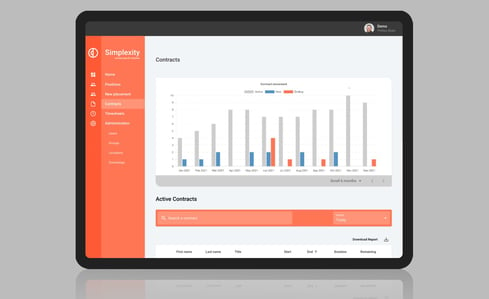Every day I work with agency and internal recruiters who have made the call to set up their own recruitment agency business. Some are super organised and prepared whilst others need more guidance to help make it a success.
Using both my own experiences and my experience helping startup agencies scale and grow, below is a brief guide to setting up your own agency.
1. Decide on Your Niche
How is your agency going to differ from the 4000+ others in Australia? What is your speciality going to be? Stick to what you know best but also ask yourself, is demand increasing for the types of roles I will be recruiting for? Fish where the fish are!
2. Company Structure
How do you want to structure your business? You basically have four structures to choose from when starting out:
- Sole Trader
- Partnership
- Company
- Trust
Starting as a sole trader or partnership (if going into business with others) may be tempting as it is quite easy to do and cheap. However, both these structures are very limiting. As a sole trader or partnership, you leave yourself personally liable for any debts or liabilities and limit your ability to distribute profits to reduce tax.
A company or trust structure is the way to go for a number of reasons that will advantage your business once billings start flowing. It is a little more complicated and expensive to set up, but the benefits are numerous.
3. Accountant
Find a good accountant that will ensure you meet your compliance obligations and that you do not run into any unexpected liabilities. Ask for references from their other satisfied business clients of a similar scale to yourself. If they can’t provide these references, keep looking.
4. Company Name
You want to get this right first time and find a name that resonates with your personal brand, your chosen niche and something that is memorable. The two non-negotiable steps are making sure the business name is available and also that the web domain name isn’t in use.
Key points:
- Check that the business name you have in mind is in fact available;
- A recruitment business that includes your full name is harder to sell down the track; and
- Check that the best domain name that relates to your company is still available (just get the .au domain).
5. Goodbye Salary, Hello ¯¯\_(ヅ)_/¯¯
I will get further into the nitty-gritty of monthly recurring costs to factor in a future blog, but here are some pertinent points to consider. If you are going to focus on permanent recruitment, questions to ask yourself include:
- How long until your first placement bills (approximately)?
- Based on your living expenses and forecast business costs, how much capital per month is required to run your business?
- Based on the above amount and the worst-case scenario, what is the longest you can trade for without securing a placement?
- What would be the financial implications of a client activating a replacement guarantee or clawback if you couldn’t find a suitable replacement candidate?
6. Placing Contractors vs Permanent Recruitment
Chasing big perm placement fees may look like the expressway for your business to stand on its own feet but with an uncertain economic outlook, contract/temp roles are often the best way to build a sustainable (and saleable) business.
In the technology space, engaging talent on a contract basis is becoming the norm for many businesses and a lucrative recurring revenue stream for agencies when running efficiently.
Ensuring cash flow for weekly/fortnightly drawdowns, ensuring that your contractors hold the correct insurance and employment structure as well as administering these tasks in a timely manner can be complicated. 5 x web developers on $600 a day = $63,000 a month that needs to be paid correctly and on time to ensure happy contractors.
Oncore can assist in this regard, providing funding to guarantee cash flow as well as payroll, timesheet and onboarding back-office support and access to wholesale insurance rates – all hedged to your contractor activity (e.g. you don’t incur costs if you don’t have contractors placed).
For both perm and temp, negotiating funding terms with your end client is critical. The more favourable terms to your client, the more risk and liability you assume. This should be reflected in your margins.












_11zon%20(1).jpg?width=302&height=124&name=linkedin-sales-solutions-vqWWOnA6--M-unsplash%20(2)_11zon%20(1).jpg)






-2.png?width=300&name=Recruiter%20(5)-2.png)